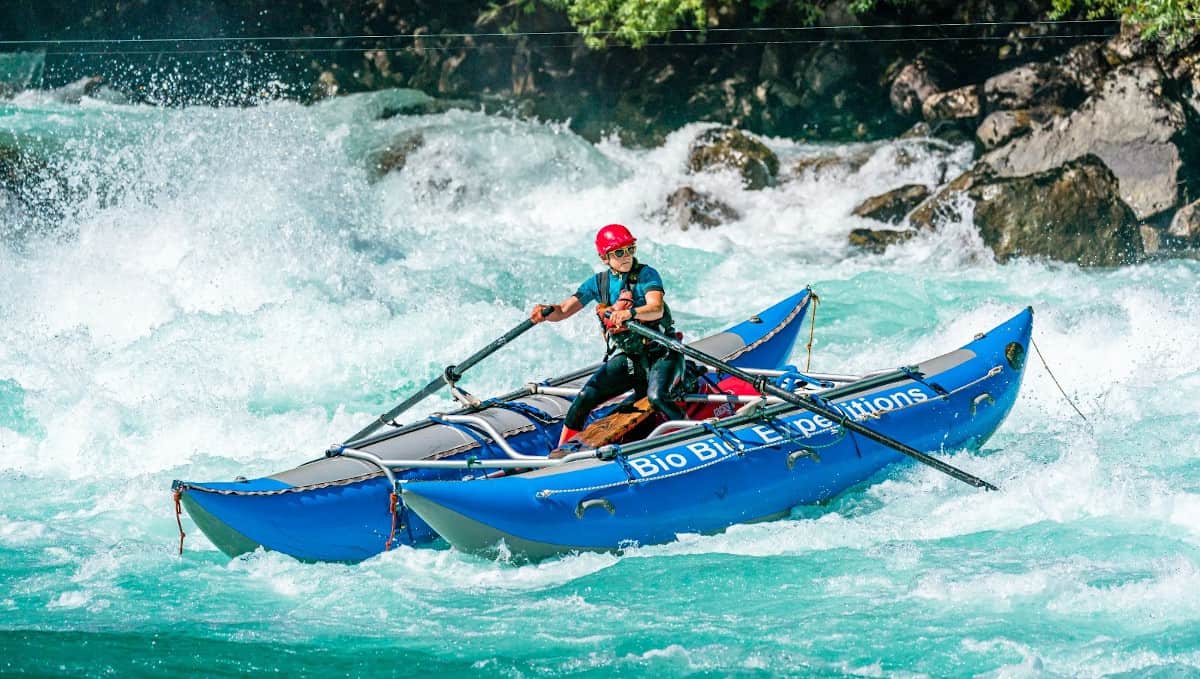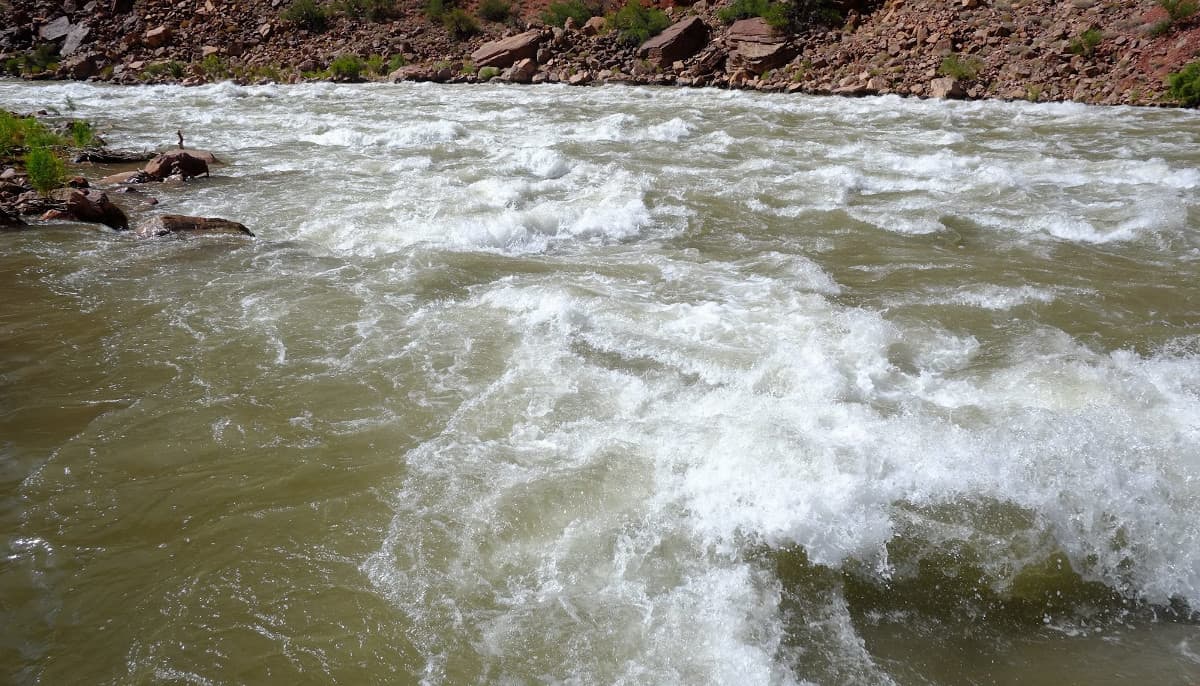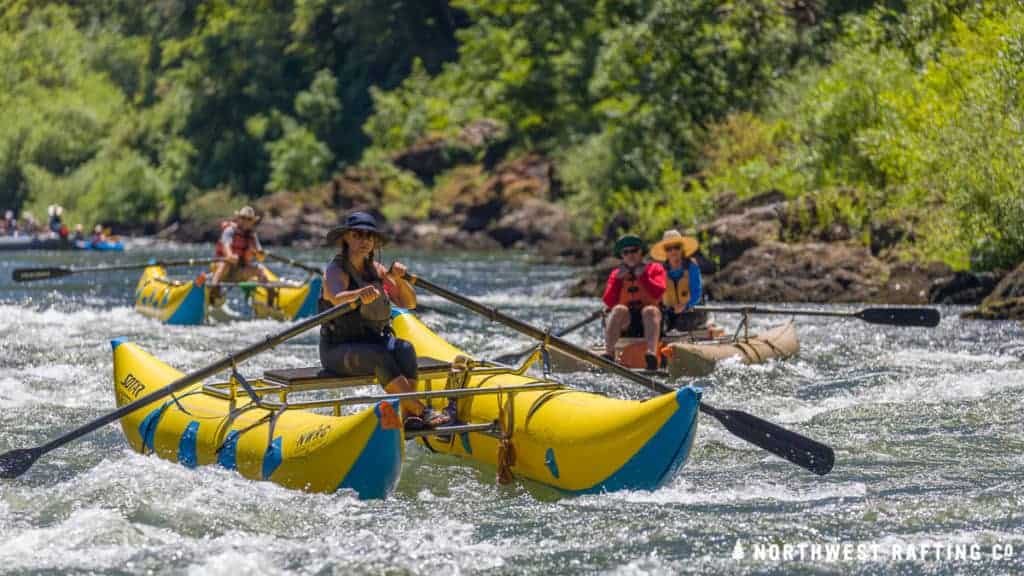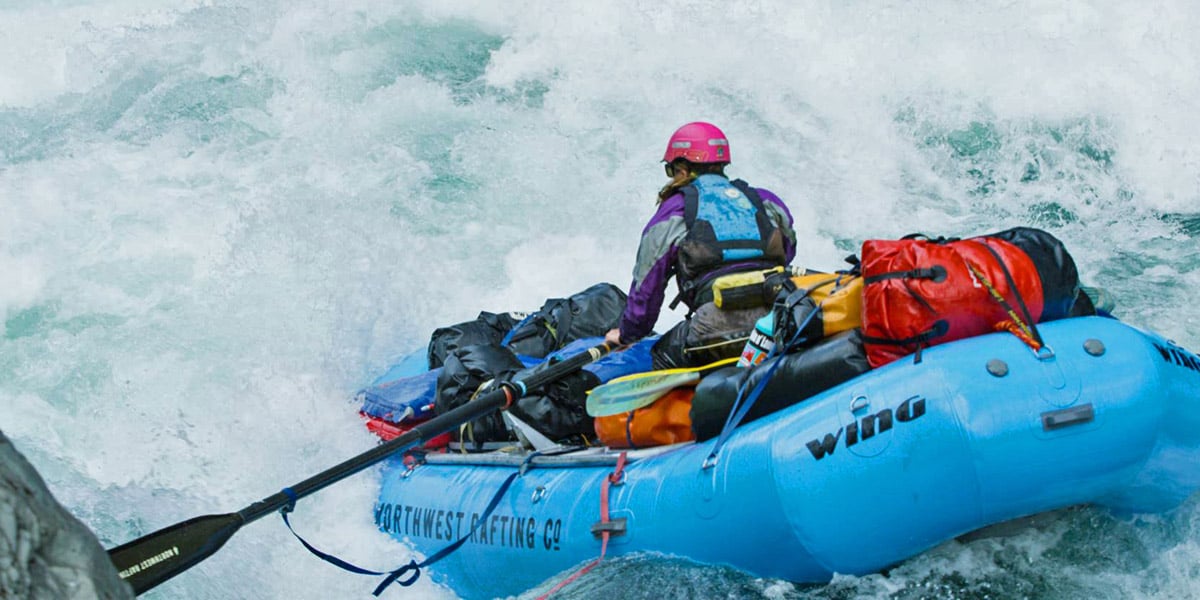Rowing From A Woman's Perspective
When I first learned to row I came from a soccer background with arms the size of angel hair pasta. A few years later I was playing a lot less soccer but having a great time leading expeditions from 18-foot gear boats. While there are diverse styles and opinions about the process, effective rowing encourages simple and safe lines while having a good time on the water. Below are a few perspectives and tips for solid skills and positive experiences from a woman’s point of view.

Safety Cataraft Running Mundaca Rapid on the Futaleufu River (Josiah Roe - The Journal of Lost Time)
Find a Good Line
Finding a good line is a creative exercise that involves physical, mental, and situational factors. While some routes rely on exceptional strength or immediate angle changes, this is not a given for everyone. In many rapids, there are various lines which are a give and take between effort, timing, and consequences. You then have the power to decide which line is right for you.
One year on a Grand Canyon trip we scouted Hance rapid. That summer, the flows were good for either a ferry across the river or a left line skirting rocks down the side. While our boats successfully ran both, the biggest difference between the two was the necessary power and timing between those lines. The ferry required a lot of consistent power while the technical left line needed timed strokes and focused effort. I liked the left line because I started to concentrate on when and where to put in strokes so the water could do the rest. In general, all the rowers used short, rapid strokes which are more powerful than the long hero pulls that waste time and energy.
Whitewater rowing has traditionally been a male-dominated activity - so consistently powerful strokes have evolved to become the norm. Adjusting for body type or taking different lines when possible is just different, not any better or any worse. It is another approach to reading water. I love the feeling of pulling a boat with all my might, but that more technical line might just save my back to push and pull another day. As long as you safely run the rapid, finding and styling another route is a mark of your confidence and trust in your own ability. It is not a judgment that you cannot keep up. In fact, challenge yourself to try and take the least amount of strokes through rapids while maintaining clean lines.
Find a Good Mentor
Everybody learns in different ways, but you can accelerate your skills and experience by boating with knowledgeable people. Woman, man, or rowing school guide, a good discussion and/or ride-along can give a lot of insight on technical aspects. You can also gain a few philosophical approaches to the oars. Asking intelligent questions to intelligent people is not only helpful for you in the moment, but likely will earn respect and future trip invitations down the road. Once you feel solid in your skills, it might be rewarding to give back to the boating community and become a mentor for someone else.
Optimize Your Gear
To optimize styling that rapid, make sure your gear works for your size. Sometimes, raft or cataraft gear (also kayaks) are tested by and sized for larger men. Make sure you buy a frame that can be adjusted so you can brace your feet on one of the bars or a piece of rigged gear. Test and buy oars that are the right weight and length for you and your boat. In terms of safety gear, buying a throw bag that you can accurately throw is much more effective than boasting the longest rope out there. Maybe if this activity was traditionally female-dominated we would have preferred lighter gear a little bit sooner anyway.
Develop Your Own Rowing and River Philosophy
In the end, no matter who you are, the river has the ultimate say. Everyone will get humbled by water. Making a safe and accurate assessment of your own abilities is the most important thing when faced with whitewater. That awareness will come in handy no matter the situation (or prevent it altogether). I go to the river thinking about anticipation, angle, and momentum, and leave the ego on shore. To me, rowing is this beautiful puzzle combining many physical and mental aspects. Putting it all together is so hard and so fun!
There are some fabulous whitewater rowers out there, women and men. While at times I have found there to be assumptions about women rowers, the nice thing about these expectations is that it is easy to exceed them. Celebrating femininity is a lot of fun while on the oars and can bring balance to a trip. Because skill is more important than strength, trips with both female and male rowers are more inclusive. They can show both women and men that there is a path for each of us, and that you too can row yourself down the river. Hopefully the next time you follow a great rower down a rapid, she is wearing a skirt.








